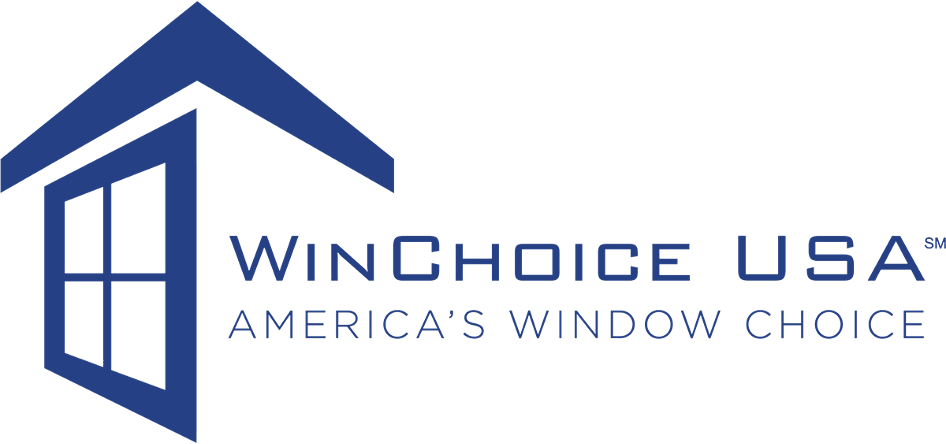Gutter Maintenance by Climate

*Updated April 4th, 2025
In the realm of home maintenance, few tasks are as crucial as ensuring the well-being of your gutters. Often overlooked, these unassuming components play a vital role in safeguarding your property from water damage, erosion, and a host of other structural issues. The significance of gutter maintenance cannot be overstated, as it serves as a first line of defense against the potentially devastating effects of moisture infiltration.
However, it’s important to recognize that the effectiveness of gutter systems can be significantly influenced by the prevailing climate conditions. From icy winters to scorching summers, and everything in between, the climate of a region can exert a profound impact on the health and longevity of your gutters.
We’re diving into the essential link between gutter maintenance and the diverse climates in which homes are situated, offering insights on how best to preserve the integrity of these unobtrusive yet indispensable elements of home protection.
Cold Climates
1. Dealing with Ice Dams
In regions characterized by frigid winters, ice dams pose a significant threat to gutter systems. These dams can form along the eaves of roofs, causing water to back up and potentially seep under shingles, leading to leaks and water damage.
2. Preventing Freeze-thaw Damage
The cyclic freezing and thawing of water can weaken gutter materials over time. It’s essential to choose durable materials and inspect gutters for cracks or damage that can result from this weather phenomenon. Ensuring proper drainage and minimizing standing water is also crucial.
3. Regular Cleaning to Avoid Blockages
Cold climates often mean falling leaves and debris during autumn, which can lead to clogged gutters. Routine cleaning is essential to prevent blockages and could impede water flow and cause overflowing, potentially damaging the surrounding property.
4. Heated Gutter Systems
Heated gutter systems can be a proactive solution for cold climates. These systems prevent ice buildup by melting snow and ice, ensuring continuous water flow and minimizing the risk of ice dam formation. They can be especially beneficial in regions prone to heavy snowfall and freezing temperatures.
Hot and Dry Climates
1. Dust and Debris Accumulation
In hot and arid environments, airborne dust and debris can settle in gutters, leading to clogs and reduced water flow. Regular cleaning is essential to prevent these accumulations, as they can hinder proper drainage during infrequent rain events.
2. Preventing Clogs Caused by Dry Leaves
Even in dry climates, trees can shed leaves that accumulate in gutters over time. These dry leaves can create blockages and obstruct the flow of water during sporadic rainstorms. Consistent leaf removal or the use of gutter covers can help maintain unobstructed water channels.
3. Checking for Cracks
Intense sunlight and high temperatures can cause gutter materials to expand and contract repeatedly, potentially leading to cracks and structural damage. Regular inspections for cracks, sagging, or warping are crucial to address issues early and prevent further deterioration.
4. Installing Gutter Guards
Gutter guards, screens, or covers can be particularly beneficial in hot and dry climates. They act as barriers, preventing debris from entering gutters while still allowing water to flow freely. This proactive measure reduces the frequency of gutter cleaning and ensures proper functioning during occasional rain events.
Humid Climates
1. Combating Mold and Mildew
In humid climates, the excess moisture in the air can promote the growth of mold and mildew in gutters. Regular cleaning and treating gutters with mold-inhibiting solutions can help prevent the buildup of these harmful organisms, which can lead to health issues and structural damage.
2. Regular Inspection for Algae and Moss
Algae and moss thrive in damp environments and can quickly colonize gutters in humid climates. Regular visual inspections will allow you to identify their presence early and take appropriate measures, such as cleaning or applying treatments, to prevent their growth from compromising gutter functionality.
3. Maintaining Proper Drainage
The prevalence of rainfall in humid climates means proper drainage is essential. Ensuring that gutters are clear of debris and properly sloped allows rainwater to flow freely, preventing water from pooling and potentially causing damage to the gutter system and your home’s foundation.
4. Using Materials Resistant to Moisture Damage
Opting for gutter materials designed to withstand high levels of humidity is crucial in humid climates. Materials such as aluminum, vinyl, or stainless steel are less prone to rust and corrosion, making them suitable choices for gutters that need to withstand the prolonged exposure to moisture in these environments.
Coastal Climates
1. Protection Against Saltwater Corrosion
Coastal areas expose gutters to salt-laden air, which can accelerate corrosion. Using materials resistant to saltwater corrosion, such as stainless steel or aluminum, can extend the lifespan of your gutters and prevent damage caused by the harsh coastal environment.
2. Frequent Checks for Rust and Erosion
Coastal climates can expedite the deterioration of gutter materials due to the combination of salt and moisture. Regular inspections are essential to identify rust, erosion, or other signs of wear early, allowing you to take timely action to prevent further damage.
3. Cleaning Salt Residue to Prevent Blockages
Salt residue from ocean air can accumulate in gutters, leading to blockages that impede water flow. Regular cleaning to remove this residue is vital to ensure proper drainage and prevent water from overflowing and causing damage to your home’s exterior.
4. Opting for Durable Gutter Materials
In coastal regions where gutters face unique challenges, investing in high-quality, durable materials is a wise choice. Choose gutter materials that are designed to withstand the corrosive effects of saltwater and the constant exposure to harsh elements.
Temperate Climates
1. Seasonal Changes and Maintenance
Gutter maintenance in temperate climates should be aligned with the seasons. Regular check-ups and cleanings are essential to adapt to the changing weather conditions and ensure gutters remain functional and efficient year-round.
2. Clearing Fallen Leaves
The autumn season brings falling leaves, which can accumulate in gutters and create blockages. Regularly cleaning these leaves prevents clogs and ensures proper water flow during rainy periods.
3. Preparing for Heavy Rainfall
Spring often brings increased rainfall to temperate climates. Before the rain arrives, it’s important to ensure gutters are clean, free of debris, and properly attached to the house, allowing them to effectively manage the higher volume of water.
4. Inspecting Gutters Before Winter
With winter comes the potential for freezing temperatures and snow accumulation. Inspecting gutters before winter ensures that they’re in good condition, minimizing the risk of ice dams, freeze-that damage, and other issues that can arise during colder months.
General Gutter Maintenance Tips
Regular Cleaning
1. Frequency of Cleaning Based on Climate
Adjust the cleaning frequency of your gutters based on the climate you live in. Areas with higher debris accumulation or frequent rain might require more frequent cleaning to prevent clogs and ensure proper water flow.
2. Proper Tools and Techniques
Utilize appropriate tools, such as a sturdy ladder and safety gear, to clean gutters effectively. Employ techniques that prioritize safety while removing leaves,debris, and dirt from the gutters and downspouts.
3. Importance of Gutter Downspout Cleaning
Pay special attention to downspouts during your cleaning routine. Cleaning downspouts ensures unobstructed water flow, preventing overflow and potential water damage to your home’s foundation and landscape.
Gutter Repair
1. Identifying Common Issues
Regularly inspect gutters for common issues such as leaks, rust, sagging, and loose connections. Identifying problems early allows you to address them before they worsen and cause more extensive damage.
2. DIY Repairs vs Professional
For minor issues, DIY repairs can be cost-effective. However, for more complex scenarios, seeking professional assistance ensures that repairs are done correctly and safely.
3. Addressing Leaks, Sagging, and Rust
All of the above are signs of wear and potential structural damage. Address these issues promptly by repairing leaks, reinforcing sagging sections and treating rust to extend the lifespan of your gutter system.
Gutter Protection Systems
1. Gutter Guards and Screens
Gutter guards and screens act as barriers to prevent debris from entering gutters while allowing water to flow through. They reduce the frequency of gutter cleaning and help maintain proper water drainage.
2. Gutter Covers
Gutter covers not only prevent debris accumulation but also safeguard gutters from pests and animals that can nest within them. They offer long-term protection against clogs and potential damage.
3. Compatibility with Different Climates
When selecting which protection system is best for you, consider its compatibility with the specific climate of your region. Some systems are better suited for certain climates, ensuring optimal durability.
Seasonal Inspections
1. Set a Schedule
Establish a routing for seasonal gutter inspections. Regular checks before and after extreme weather conditions in particular help identify any damage and allow you to take immediate action.
2. Detect Early Signs of Damage
During inspections, watch for signs of wear, corrosion, detachment, and any other abnormalities. Early detection helps prevent costly repairs down the line.
3. Preventive Measures
Seasonal inspections provide opportunities for preventive maintenance, such as tightening fasteners, resealing joints, and applying protective coatings. These measures can extend the life of your gutter system and ensure it remains functional throughout the year.
Final Thoughts
No matter the climate, your gutters play a crucial role in protecting your home from water damage and other issues. Taking the time to understand how your local weather impacts gutter maintenance is key to keeping your system in great shape year-round.
From cold climates where ice dams and freezing can wreak havoc, to hot, dry areas where dust and debris accumulate, each environment presents its own set of challenges. By staying proactive and tailoring your maintenance routine to your climate, you can avoid costly repairs and extend the lifespan of your gutters.
Investing in the right protection systems, like gutter guards or covers, can also make a big difference in keeping your gutters clear and functional. Regular inspections, especially before and after extreme weather events, help you spot potential issues early on and take preventative measures before small problems become major headaches.
Ultimately, keeping your gutters in good condition doesn’t have to be a daunting task. With a little regular maintenance and some thoughtful planning, you can keep your gutters working efficiently, no matter where you live. Taking care of your gutters means protecting your home – and that’s always worth the effort!
Additional Gutter Resources

Anna has over six years of experience in the home services and journalism industries and serves as the Content Manager at MyHomePros.com, specializing in making complex home improvement topics like HVAC, roofing, and plumbing accessible to all. With a bachelor’s degree in journalism from Auburn University, she excels in crafting localized, comprehensive guides that cater to homeowners’ unique needs. Living on both coasts of the United States has equipped her with a distinctive perspective, fueling her passion for turning any house into a cherished home through informed, personalized decision-making.
Connect with top-rated local contractors who can help you with siding, roofing, HVAC, windows, and more. Get free quotes from verified professionals in your area today.








